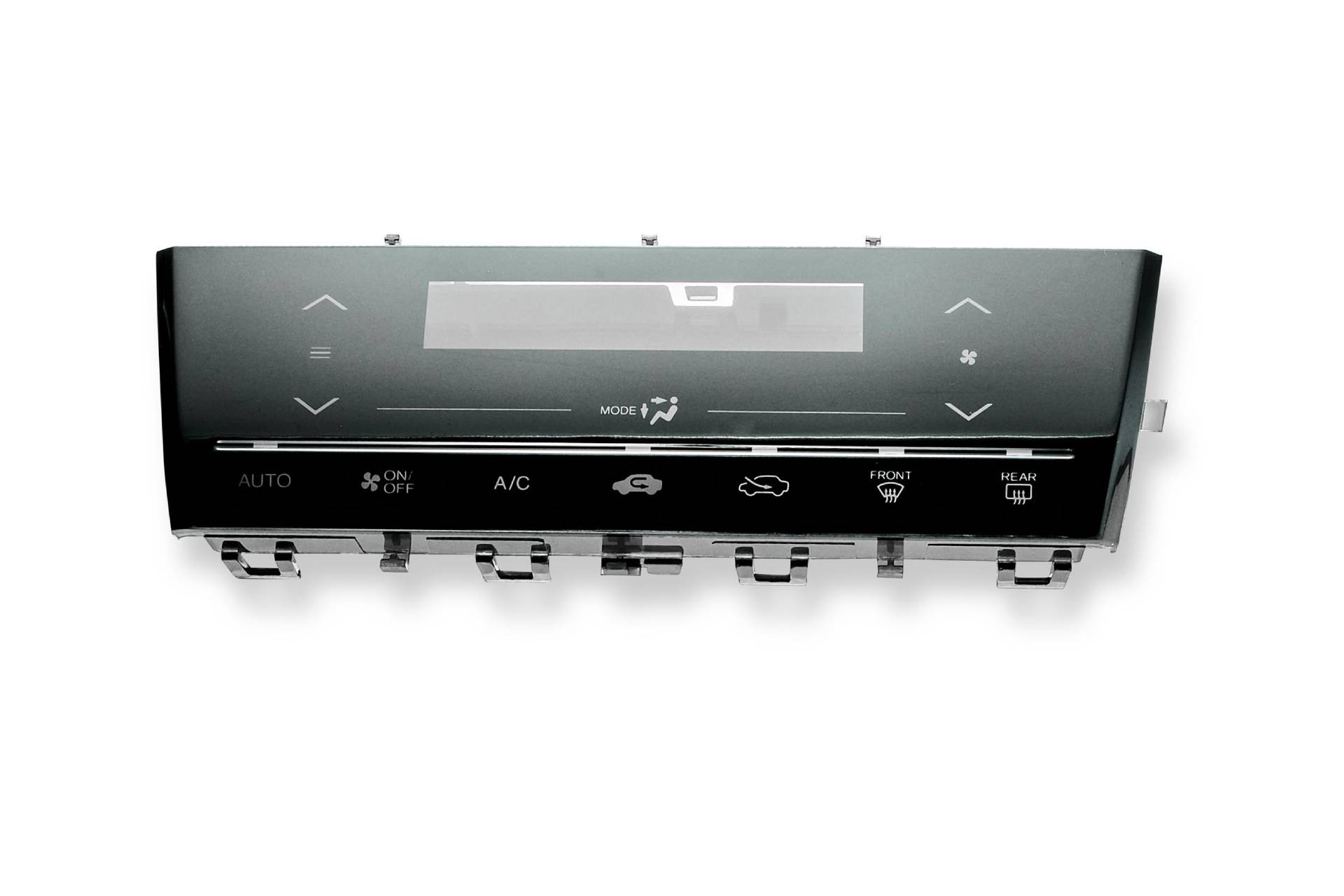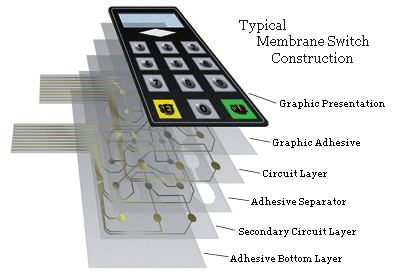A reliable membrane switch manufacturer delivers both trial and bulk options.
A reliable membrane switch manufacturer delivers both trial and bulk options.
Blog Article
All Concerning Membrane Switch: Understanding Its Design and Capability
When you assume about the control user interfaces in modern gadgets, membrane layer switches frequently come to mind. Allow's discover what sets membrane layer switches apart from other control systems.
What Are Membrane Layer Buttons?

Membrane buttons can additionally be personalized relating to shape, size, and graphics, allowing manufacturers to develop one-of-a-kind user interfaces tailored to specific items. Generally, membrane switches play a substantial function in improving user experience throughout a large range of applications.
Exactly How Membrane Switches Work
When you push a key on a membrane button, it triggers a straightforward yet efficient mechanism. The leading layer, often made from versatile product, presses down onto a conductive layer beneath it. This action bridges the void between conductive traces, completing an electric circuit. As soon as the circuit shuts, it sends out a signal to the tool's controller, which translates your input.
You'll notice that the responsive responses varies based upon the button style, offering either a soft click or a much more obvious response. When you launch the key, the membrane layer go back to its original setting, resuming the circuit and stopping the signal. This process takes place almost instantly, ensuring a receptive customer experience.
Membrane switches are popular because of their toughness and resistance to dust and wetness, making them optimal for different applications, from household home appliances to clinical tools. Recognizing this operation helps you appreciate their extensive usage.
Trick Components of Membrane Switches
Recognizing the crucial components of membrane layer switches is essential for comprehending their performance and design. The safety layer shields against environmental elements and wear, expanding the switch's life expectancy. By recognizing these components, you'll obtain insight right into just how membrane layer switches run and their significance in numerous applications.
Materials Made Use Of in Membrane Layer Switch Style
The performance and longevity of membrane switches greatly rely on the materials made use of in their style. You usually encounter polyester and polycarbonate as main substratums because of their superb strength and versatility. These materials withstand scrapes and chemicals, making them suitable for requiring settings.
The conductive layers commonly utilize silver or carbon, chosen for their dependability and conductivity. membrane switch manufacturer. Silver gives superior efficiency, while carbon is an affordable choice. For the overlay, you could consider a matte or shiny finish, depending on your aesthetic demands and customer experience
Adhesives play a crucial function also; they bond layers firmly and guarantee longevity. Make specific to pick adhesives that endure environmental aspects like temperature level and moisture. Lastly, do not overlook the significance of an excellent printing method for graphics, as it improves both capability and visual appeal. Choosing the right materials will certainly assure your membrane switch stands the examination of time.
Layout Factors To Consider for Membrane Layer Switches
While creating membrane switches, it's crucial to consider different elements that influence their performance and customer experience. Start by concentrating on the layout and button size; make sure they're instinctive and simple to navigate. Think about the tactile comments you wish to give-- will individuals need an obvious click click here for info or a softer touch? Additionally, consider the materials you'll use, as they'll impact toughness and appearances.
Validate your layout suits ecological factors, like wetness or temperature level variants, which can influence efficiency. By meticulously taking into consideration these aspects, you'll create a membrane layer button that enhances usability and complete satisfaction.
Applications of Membrane Layer Switches
Membrane switches are functional components found in numerous applications, from commercial tools to customer electronic devices. You'll see their effect in devices that need sturdy user interfaces and in gadgets that benefit from sleek layouts. Comprehending these applications assists you value the performance and usefulness of membrane layer buttons in daily modern technology.
Industrial Devices Use
When you're seeking to improve the functionality of industrial equipment, membrane switches supply a dependable solution that incorporates toughness with straightforward style. These switches are best for severe environments, offering resistance to dust, moisture, and chemicals. You'll find them in control panels for producing machines, cooling and heating systems, and clinical devices, where accuracy and responsiveness are vital. Their reduced account means they fit flawlessly into numerous devices, conserving important space while maintaining simplicity of usage. With adjustable graphics and backlighting options, you can develop an user-friendly user interface for operators, improving efficiency and safety. Plus, their lengthy lifespan decreases upkeep prices, making them a smart financial investment for your commercial applications. Accept membrane layer switches to streamline your procedures and improve general performance.
Consumer Electronics Integration
In the domain name of consumer electronics, membrane switches play a necessary role in improving user interaction and tool capability. You'll find them in Home Page devices like microwaves, push-button controls, and pc gaming consoles, providing a smooth method to communicate with technology. Their sleek style permits for very easy combination into various items, making controls instinctive and user-friendly. With their ability to include graphics and backlighting, you can take pleasure in a modern aesthetic check this that enhances the tool's total appearance. Membrane buttons also assure longevity and resistance to dust and moisture, prolonging the life-span of your electronics. By choosing membrane switches, you enhance not just the performance however also the style of your tools, making everyday interactions smooth and pleasurable.
Benefits and Drawbacks of Membrane Layer Switches
While membrane switches supply a range of benefits, they also come with some drawbacks that you need to consider. One substantial advantage is their portable style, making them perfect for space-constrained applications.

Membrane switches can have a much shorter life-span compared to mechanical buttons, especially under hefty usage. They can likewise be much less responsive, which may influence individual feedback throughout procedure. Stabilizing these pros and cons will certainly assist you establish if membrane buttons are the best fit for your task.
Often Asked Inquiries
For How Long Do Membrane Layer Switches Over Normally Last?
Membrane changes usually last in between 5 to 10 years, depending on use and environmental problems. You'll intend to review variables like wear, direct exposure to wetness, and temperature level fluctuations to determine their long life efficiently.
Can Membrane Switches Be Personalized for Particular Layouts?
Yes, you can customize membrane buttons to fit specific layouts (membrane switch manufacturer). You'll have the flexibility to pick colors, shapes, and formats that match your task's needs, ensuring they blend seamlessly with your general visual
What Is the Price Variety for Membrane Layer Switch Production?
The expense array for membrane switch production typically falls in between $1 and $10 each, depending on aspects like layout complexity, quantity, and materials. You can get quotes from manufacturers to locate the very best alternative.

Are Membrane Changes Water-proof or Immune?
Membrane switches can be created to be water-proof or resistant, depending upon materials utilized and building methods. If you need them for damp atmospheres, assure you define those needs throughout the design process.
Exactly How Do Membrane Changes Compare to Conventional Buttons?
Membrane layer buttons are generally thinner and more flexible than traditional buttons, providing a smooth design. They're commonly easier to clean up and incorporate, but could not provide the tactile comments you're used to with mechanical options.
Conclusion

Report this page